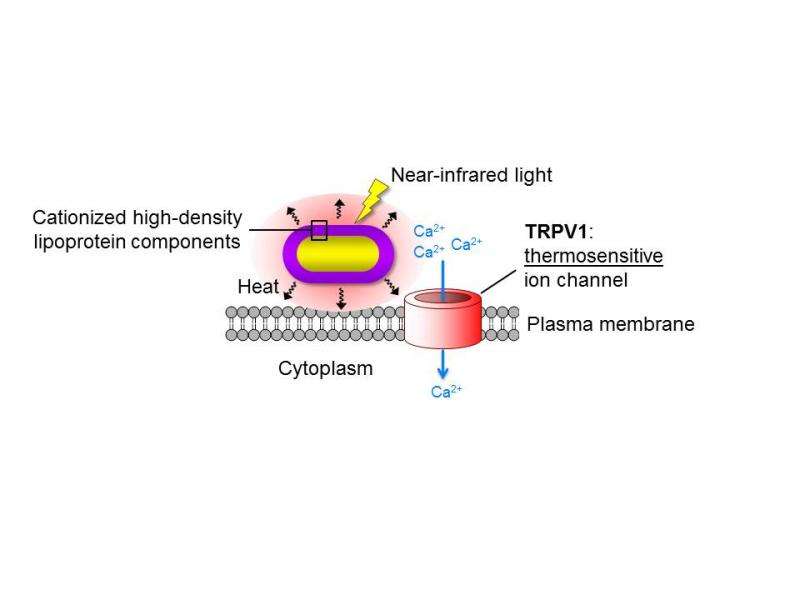Intractable pain may find relief in tiny gold rods

A team of scientists at Kyoto University's Institute for Integrated Cell-Material Sciences (iCeMS) has developed a novel technique using tiny gold rods to target pain receptors.
Gold nanorods are tiny rods that are 1-100 nanometers wide and long. In comparison, a human hair is 100,000 nanometers wide. The team coated gold nanorods with a special type of protein that transports fat within the body known as a lipoprotein. This allowed the nanorods to bind efficiently to nerve cell membranes bearing a pain receptor called TRPV1 (transient receptor potential vanilloid type 1). Near-infrared light was then applied to the nanorod-coated pain receptors. The nanorods heated up, activating the pain receptors to allow an influx of calcium ions through the membrane. Prolonged activation of TRPV1 is known to subsequently lead to their desensitization, bringing pain relief. Importantly, heating the gold nanorods enabled safe activation of the TRPV1 pain receptors alone, without affecting the membrane in which they lie.
Previous studies had shown that magnetic nanoparticles (tiny particles in the nano-range made out of magnetic materials) are also able to activate TRPV1 receptors by applying a magnetic field. The target cells in this method, however, require genetic modification for it to work. Using lipoprotein-coated gold nanorods does not require genetic modification of the target cells. Also, the nanorods were found to have at least 1,000 times greater efficiency than magnetic nanoparticles in heat generation and in activating TRPV1 receptors.
"The gold nanorods can be retained in the body for a prolonged period," says Tatsuya Murakami, the principal investigator of this study. "Local injection of our gold nanorods might enable repetitive and on-demand treatment for people experiencing intractable pain because prior genetic engineering of the target cells is unnecessary."

The study was published in Angewandte Chemie International Edition on August 6th, 2015.
More information: Thermosensitive Ion Channel Activation in Single Neuronal Cells by Using Surface-Engineered Plasmonic Nanoparticles, Angewandte Chemie International Edition, Published Online 6 August 2015, onlinelibrary.wiley.com/doi/10 … e.201505534/abstract
Journal information: Angewandte Chemie International Edition
Provided by Kyoto University




















